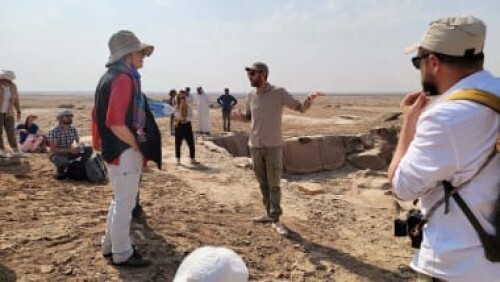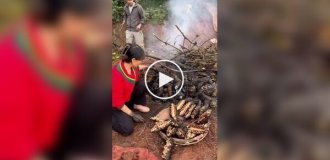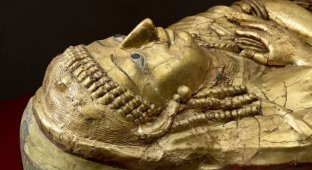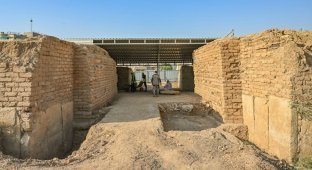Archaeologists have discovered the remains of a public dining room, which almost 5,000 years old, in southern Iraq. The find was made in ancient Sumerian city of Lagash, researchers from the University of Pennsylvania said. 

Archaeologists from the University of Pennsylvania have discovered the remains of a nearly 5,000-year-old public dining room in southern Iraq.
The researchers were surprised by the large "tavern" they discovered with benches, a kind of refrigerator made of clay, an oven and the remains of vessels for storage, many of which still contained food.
Holly Pittman, Professor of Art History at Pennsylvania University, curator of the Middle East section of the Pennsylvania Museum and director of the Lagash project, explained: “This is a public institution, built sometime around 2700 B.C. Part of it is a place for eating outdoors, part is a kitchen area.
The find gives an idea of the life of ordinary people who lived in urban area for the common people in southwest Asia around 2700 BC AD
Researchers from the University of Pennsylvania are studying this area with 1930s when the Pennsylvania Museum merged with the British Museum for excavations of an important archaeological site - the village of Ur, located about 50 kilometers southwest of the find site. IN In 2019, the last stage of excavations in Lagash began, and despite a short pause caused by the pandemic, the project is gaining momentum: already completed four field seasons.
For the most efficient excavations, researchers use advanced techniques, including drone photography and thermal imaging, magnetometry, fixing the magnetic intensity of buried objects, and microstratigraphic sampling - a modern surgically accurate type excavations. To understand the ecological context of the city, they also extracted sediment cores (samples) that reflect millennia of ecological development. 
“Lagash, a city of more than 450 hectares, was one of the largest settlements in southern Iraq in the 3rd millennium, Pittman says. - This place was of great political, economic and religious significance. At In this Lagash was a significant settlement that had free access to the fertile land, where many people lived, engaged in intensive handicraft production. Thus the city was an important industrial center of the region.
“This is not like traditional ancient archeology in Iraq,” says Zaid Alravi, head of the Lagash Project at the Pennsylvania Museum. - We are not going to look for large mounds in the hope of finding an old temple. We use our methods, and then, based on the priorities of science, we look for what we think will provide important information to complete knowledge gaps in this area.
To explore a public space located less than half a meter below the surface, archaeologists used a method that involves excavating thin horizontal sections one after the other. The discovery of the tavern leads scientists to speculate that the society of Lagash included, in addition to the slaves and the elite, also the middle class.
"The fact that you have a public place where people can sit down, have a pint of beer and eat some fish stew, means they don't work like slaves,” says Reed Goodman, an archaeologist from the Pennsylvania university. - Pet find allows us to create much more colorful history of the city.
Other discoveries made by researchers at the excavation site include a pottery workshop with six pottery kilns, benches and a table that was once used by the first inhabitants of the city. Except In addition, they found a private dwelling with a kitchen and bathroom.
Add your comment
You might be interested in:























